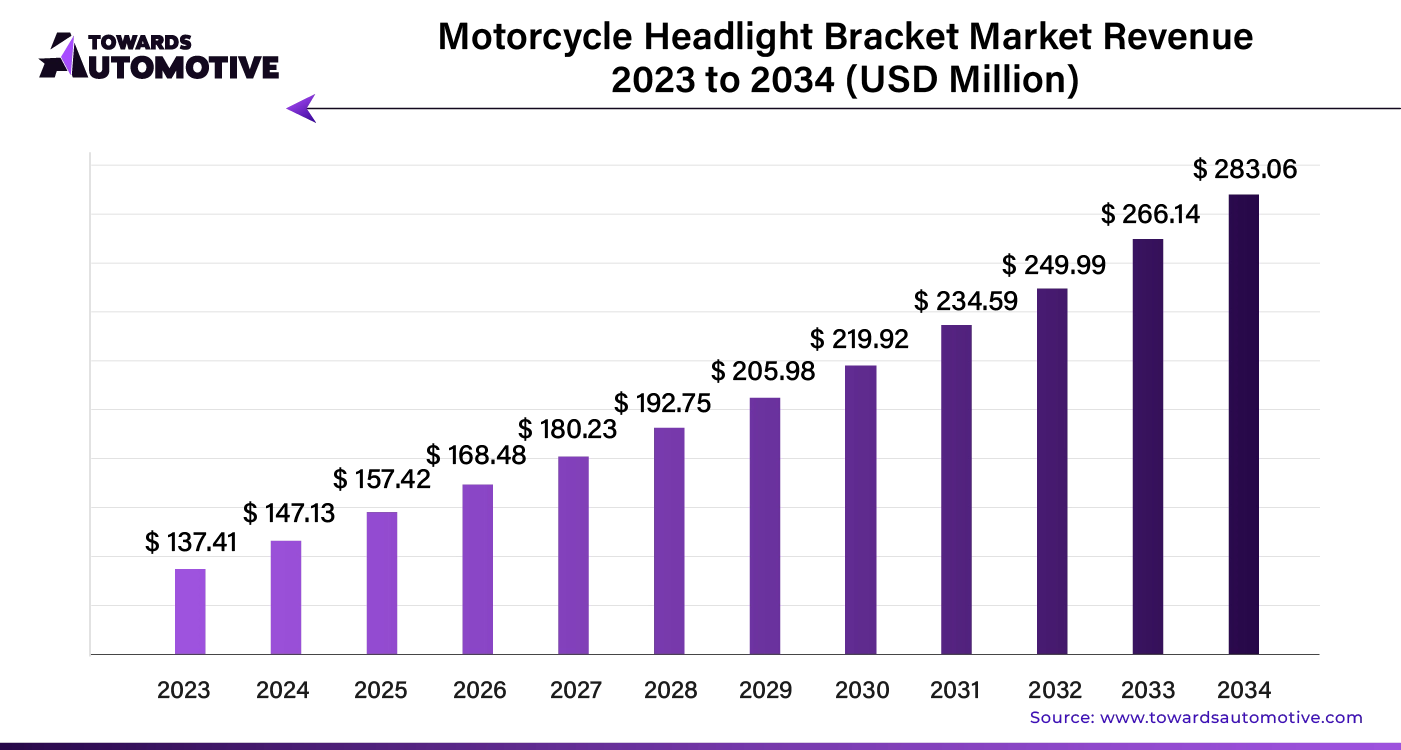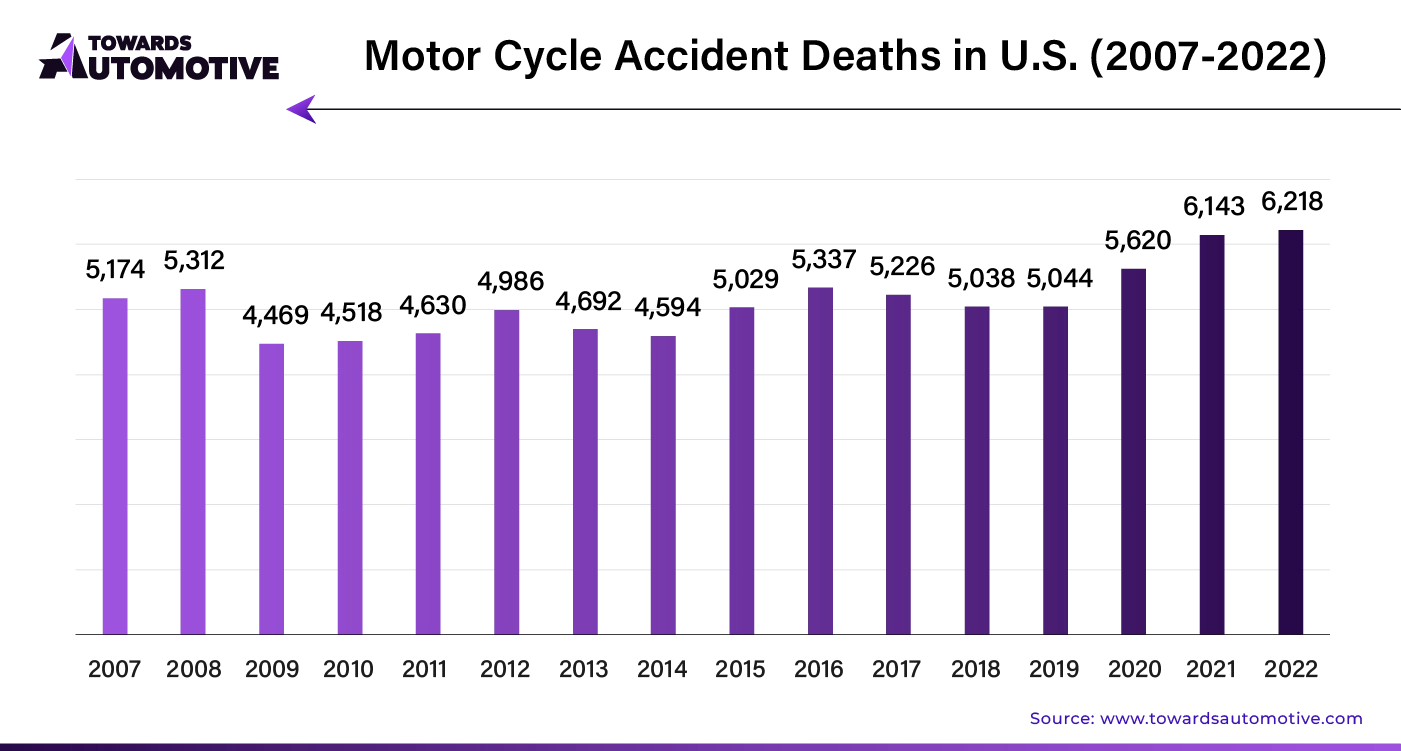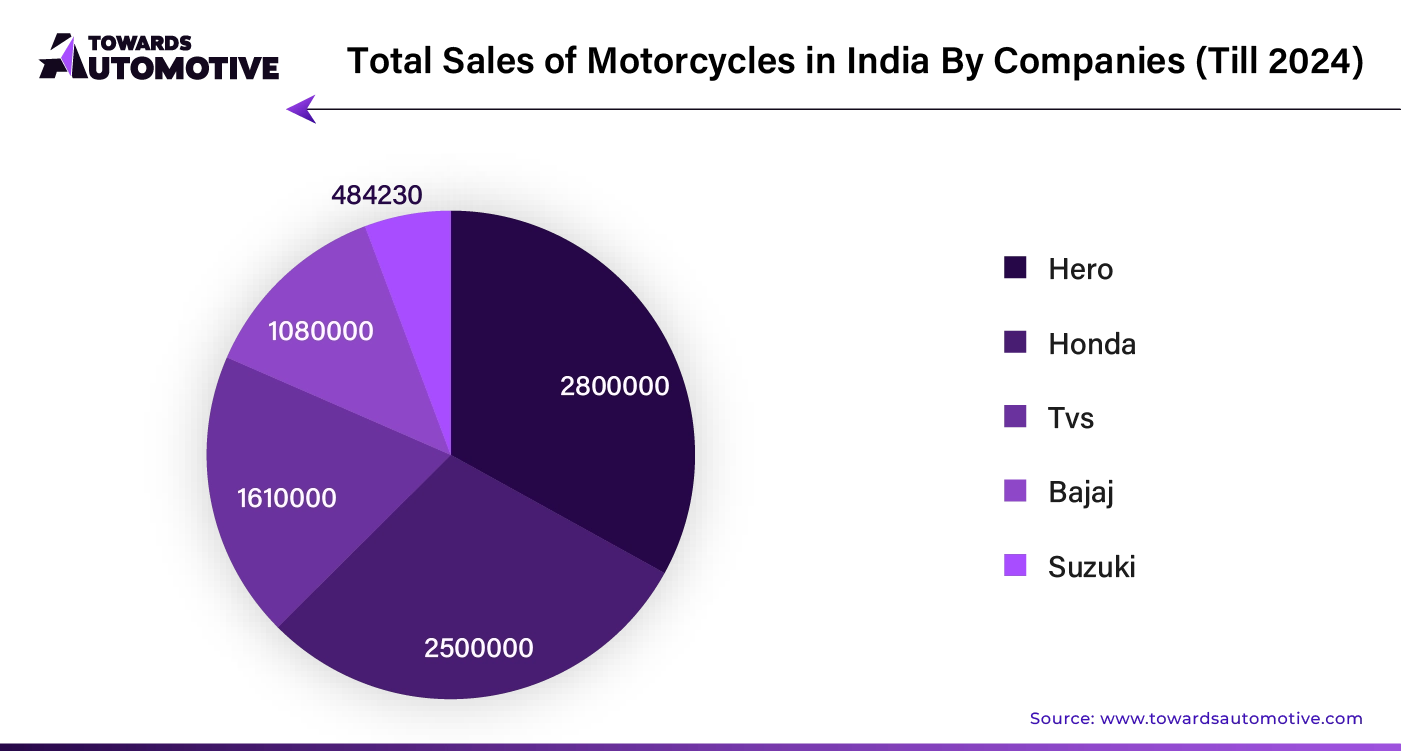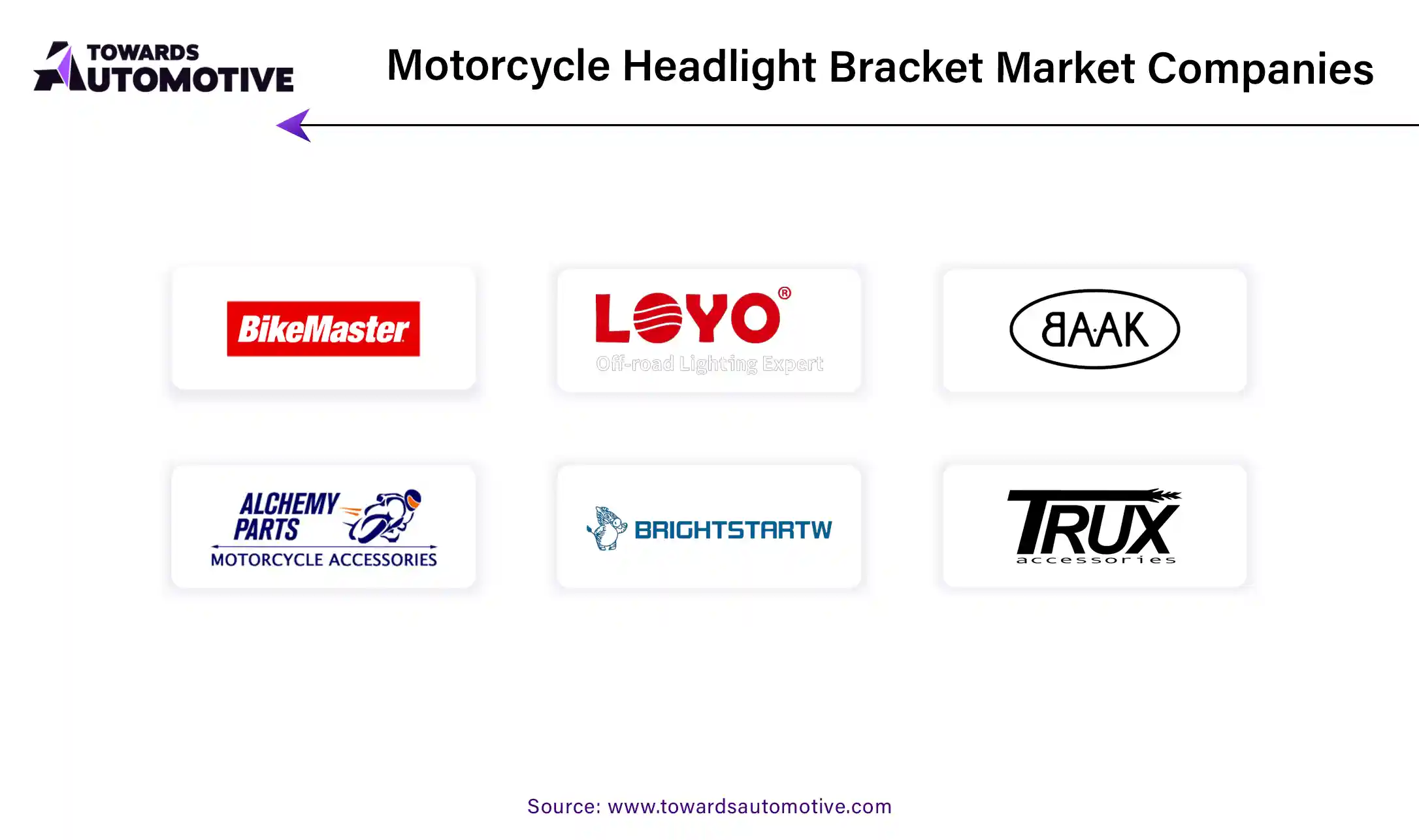February 2025
The global motorcycle headlight bracket market is expected to increase from USD 157.42 million in 2025 to USD 283.06 million by 2034, growing at a CAGR of 6.8% throughout the forecast period from 2025 to 2034.

Unlock Infinite Advantages: Subscribe to Annual Membership
Technological advancements are significantly shaping the growth of the motorcycle headlight bracket market. Leading manufacturers are capitalizing on these innovations to offer customized solutions that meet diverse consumer needs, whether for off-road, city, or long-distance driving.
To cater to varying demands, manufacturers are focusing on enhancing the flexibility and durability of headlight brackets. They are increasingly integrating advanced materials such as carbon fibers and elements like calcium, manganese, and iron. This approach ensures that brackets not only meet specific physical requirements but also offer improved performance and longevity.
Consumer awareness about road safety is rising, partly due to the increasing number of road accidents. As a result, there is a heightened demand for additional safety equipment for motorcycles. This growing concern is driving the production of safety gear, which, in turn, is propelling the expansion of the motorcycle headlight bracket market. The automotive market valued at USD 4,070.19 billion in 2023, is experiencing growth and is projected to surpass USD 6,678.28 billion by 2032, with a significant CAGR of over 5.66%.
Urbanization and population growth are leading to more congested roads, heightening safety concerns. The increase in traffic has led to a higher incidence of vehicle damage, further boosting the demand for safety equipment. This trend is a key factor contributing to the growth of the global motorcycle headlight bracket market.
Governments are responding to these safety concerns by implementing stringent regulations for vehicle manufacturers. These policies mandate the inclusion of safety features in vehicles rather than offering them as optional accessories. Such regulatory measures are stimulating demand for headlight brackets, driving industrial growth and market expansion.
As disposable incomes increase, consumers are increasingly seeking premium, luxury, and customizable products. This trend is particularly evident in North America and Europe, where the demand for high-end, personalized motorcycle headlight brackets is on the rise. This growing preference for premium products is a significant factor contributing to the expansion of the global motorcycle headlight bracket market.
The electric vehicle (EV) sector is rapidly emerging as a key driver in the motorcycle headlight bracket market. EVs require aerodynamic brackets made from lightweight materials such as alloy fiber to enhance both performance and aesthetics. This growing trend towards lightweight and aerodynamic designs is expanding the market for motorcycle headlight brackets, as manufacturers adapt to meet the needs of modern electric motorcycles.
The popularity of motorcycles has surged in recent years, leading to a heightened demand for motorcycle accessories, including headlight brackets. Motorcycles offer several advantages such as speed, improved commutation, and the ability to navigate through traffic more efficiently. This increased demand for motorcycles is driving growth in the accessory market, including the need for durable and functional headlight brackets.
Vehicle manufacturers are continuously innovating lighting systems, with LED lights becoming increasingly popular. As lighting technology advances, there is a growing need for motorcycle headlight brackets that can protect these new lighting systems from road hazards. The shift towards external headlight fittings for improved visibility further boosts the demand for robust and reliable headlight brackets, contributing to the market's growth.
However, the market faces challenges, particularly due to fluctuations in raw material prices. Aluminum, a crucial material for manufacturing motorcycle headlight brackets, has experienced significant price volatility. This unpredictability in aluminum costs can impact production expenses and potentially hinder market growth for major manufacturers.
In response to increasing road accidents, governments worldwide are enforcing stricter safety regulations for vehicle design and components. These enhanced safety standards apply to motorcycle accessories, including headlight brackets, potentially complicating production processes. These regulatory challenges could impact the ease of manufacturing and pose a risk to the overall growth rate of the motorcycle headlight bracket market.
Overall, while the market for motorcycle headlight brackets benefits from trends such as rising disposable incomes and innovations in lighting technology, it also faces challenges related to raw material costs and regulatory pressures.
The integration of Artificial Intelligence (AI) is set to transform the motorcycle headlight bracket market dramatically. By leveraging AI, manufacturers can enhance the design and functionality of headlight brackets, leading to superior products that meet evolving consumer demands. AI-driven design tools enable the creation of lightweight, durable, and more efficient brackets through advanced simulations and optimizations, reducing the need for costly prototypes and shortening development cycles.
AI also plays a pivotal role in quality control. Machine learning algorithms can identify defects and inconsistencies in real-time during the manufacturing process, ensuring higher product standards and reducing waste. Predictive maintenance powered by AI helps manufacturers anticipate equipment failures before they occur, leading to less downtime and increased production efficiency.
Moreover, AI can enhance the customization of motorcycle headlight brackets to fit specific models and preferences, meeting the growing demand for personalized motorcycle accessories. With AI's capability to analyze market trends and consumer preferences, companies can quickly adapt to changes and innovate more effectively, driving market growth and staying ahead of competitors. This technological advancement not only boosts operational efficiency but also opens new avenues for product innovation in the motorcycle headlight bracket sector.
In the motorcycle headlight bracket market, the supply chain operates with a streamlined approach to ensure efficiency and meet market demands. Manufacturers begin by sourcing high-quality raw materials such as aluminum and plastic from reliable suppliers. These materials are then processed and manufactured into headlight brackets using advanced technologies.
After production, finished brackets undergo rigorous quality control checks to ensure they meet industry standards. The products are then packaged and prepared for distribution. Efficient logistics play a crucial role in this stage, with careful coordination to transport the brackets to various regional warehouses.
Retailers and distributors receive the headlight brackets from these warehouses and stock them in their inventories. They manage inventory levels to align with market demand, ensuring that customers receive timely deliveries.
Effective communication between manufacturers, suppliers, and distributors is essential to address any disruptions or adjustments in the supply chain. Overall, the success of the motorcycle headlight bracket market relies on a well-coordinated supply chain that balances production efficiency, quality control, and timely distribution to meet consumer needs.
The motorcycle headlight bracket market thrives on several key components and influential companies shaping its ecosystem. Essential components of this market include headlight brackets, mounting hardware, and adjustment mechanisms. Headlight brackets, typically made from durable metals or advanced polymers, support and align motorcycle headlights, ensuring optimal visibility and safety. Mounting hardware secures the bracket to the motorcycle, while adjustment mechanisms allow for precise alignment.
Various companies contribute significantly to this market. For instance, companies like Honda, Yamaha, and Harley-Davidson play a pivotal role by designing and integrating headlight brackets into their motorcycle models, enhancing product performance and safety. OEM suppliers such as Bosch and Valeo provide high-quality brackets and associated components, meeting stringent industry standards. Additionally, aftermarket firms like Puig and Rizoma offer innovative and customizable headlight brackets, catering to enthusiasts seeking personalized upgrades.
Together, these companies drive market growth through innovation, quality manufacturing, and meeting evolving consumer demands. Their contributions ensure a diverse range of products that enhance motorcycle safety and aesthetics, solidifying their crucial role in the headlight bracket market.
The motorcycle industry is witnessing significant growth in North America, boosting demand for motorcycle parts and accessories, particularly headlight brackets. This trend is anticipated to have a considerable impact on the global motorcycle headlight bracket market, with notable growth expected in several key regions over the next decade.
North America: Consistent Growth with Adventure Touring Influence
In North America, especially the United States, the motorcycle headlight bracket market is projected to grow at a Compound Annual Growth Rate (CAGR) of approximately 5.3% from 2024 to 2034. This increase is largely driven by the rising popularity of adventure touring among consumers. Major motorcycle manufacturers such as Yamaha, BMW, and Honda are developing bikes tailored for adventure sports to meet this growing demand. This trend has heightened the need for protective accessories, including headlight brackets, contributing to steady market growth.

United Kingdom: Market Expansion Fueled by Sustainability Initiatives
In the United Kingdom, the motorcycle headlight bracket market is expected to grow at a CAGR of around 6.2% during the forecast period. This growth is largely due to the country’s focus on sustainability and the regulatory standards set forth by the Environment Act 2021. The UK government has mandated the use of sustainable materials in manufacturing, prompting headlight bracket producers to adopt eco-friendly practices. Utilizing recycled materials from scrap vehicles to produce headlight brackets helps lower production costs and supports market expansion.
India: Accelerated Growth Driven by Road Safety Regulations
India is anticipated to experience the most rapid growth in the motorcycle headlight bracket market, with a forecasted CAGR of about 6.8% through 2034. This expansion is driven by stringent road safety regulations. The Central Motor Vehicle Rules, 1989 require all vehicles with an engine capacity exceeding 500 cc to be equipped with headlights. This regulation has led to increased demand for headlights and, consequently, headlight brackets. As the Indian government continues to enforce these safety laws, the demand for high-quality headlight brackets is expected to grow significantly.
Overall, the motorcycle headlight bracket market is set for substantial growth in these key regions, driven by changing consumer preferences, sustainability trends, and regulatory measures.

Aluminum Motorcycle Headlight Brackets Set to Lead Market with Rising Demand for Lightweight Components
Aluminum is projected to become the leading material in the motorcycle headlight bracket market, thanks to its exceptional physical properties. Manufacturers are increasingly choosing aluminum to produce headlight brackets for enhanced performance. This shift is driven by the rising production of motorcycles, which is a response to growing demand associated with the expanding global population.
In 2024, aluminum is expected to capture a significant share of approximately 62% in the market. Its lightweight and durable characteristics make it an attractive choice for motorcycle headlight brackets. Manufacturers favor aluminum for its ability to contribute to a lighter motorcycle design while providing long-lasting durability. This reduces maintenance costs for consumers and boosts the material's popularity. As a result, aluminum is anticipated to be the most in-demand material in the forecast period, significantly driving market growth.
Growing Travel Trends Boost Demand for Conventional Motorbikes
The segment for conventional motorbikes is anticipated to hold a dominant share of around 94% in 2024. Changing consumer preferences and lifestyle trends, particularly the rise in travel and exploration, are fueling the demand for traditional motorbikes. The increasing number of adventure seekers and tourists is driving this demand, leading to a higher need for headlight brackets suited for conventional bikes. This trend is set to significantly expand the global market for motorcycle headlight brackets.
Strategic Moves and Competitive Dynamics in the Motorcycle Headlight Bracket Market
The competitive landscape of the motorcycle headlight bracket market is shaped significantly by major players leveraging various strategies to enhance their market presence. Large-scale manufacturers are aggressively pursuing global expansion to strengthen their industry positions. Key strategies such as partnerships, mergers, acquisitions, and strategic collaborations are pivotal in gaining a competitive edge and mitigating the threat posed by new entrants.
New market entrants are capitalizing on their ability to offer lower price margins, which can attract consumers and provide them with an initial advantage in the competition. Their competitive pricing strategies often help them capture market share and challenge established players.

By Material Type
By Application Type
By Sales Channels
By Region
February 2025
February 2025
February 2025
September 2024
We offer automotive expertise for market projections and customizable research, adaptable to diverse strategic approaches.
Contact Us